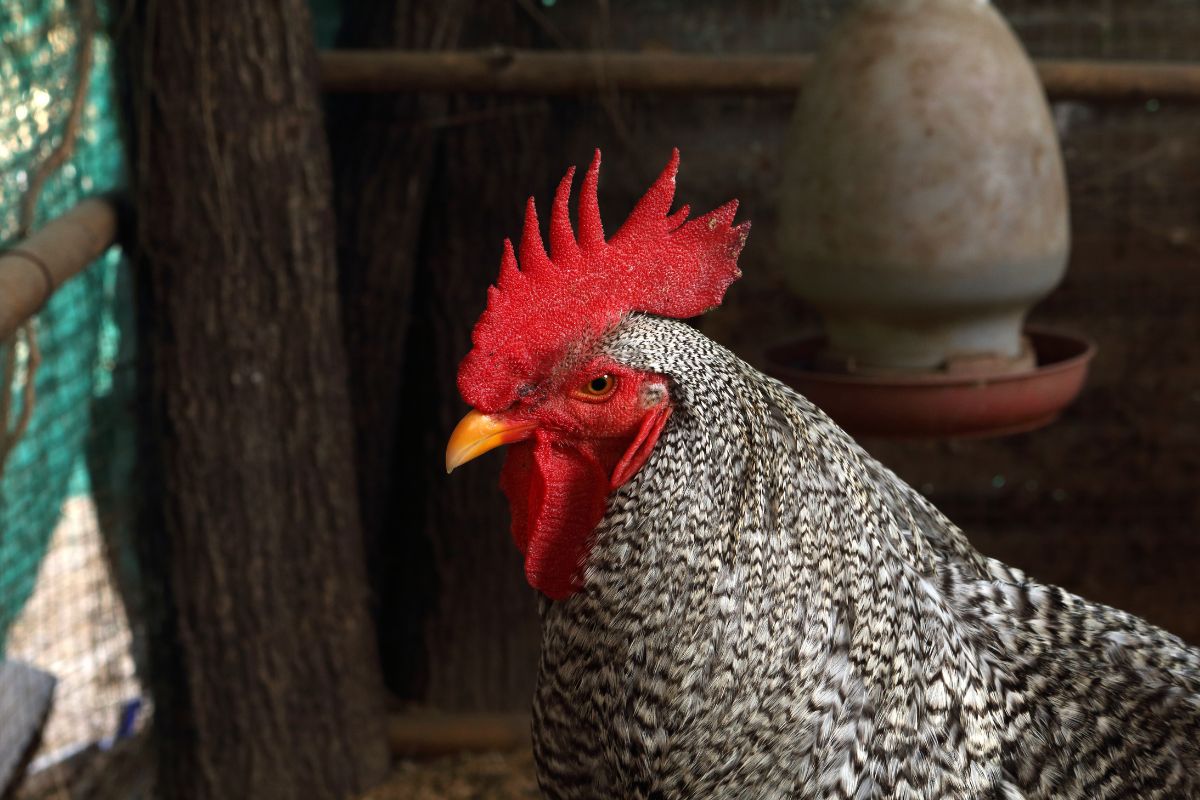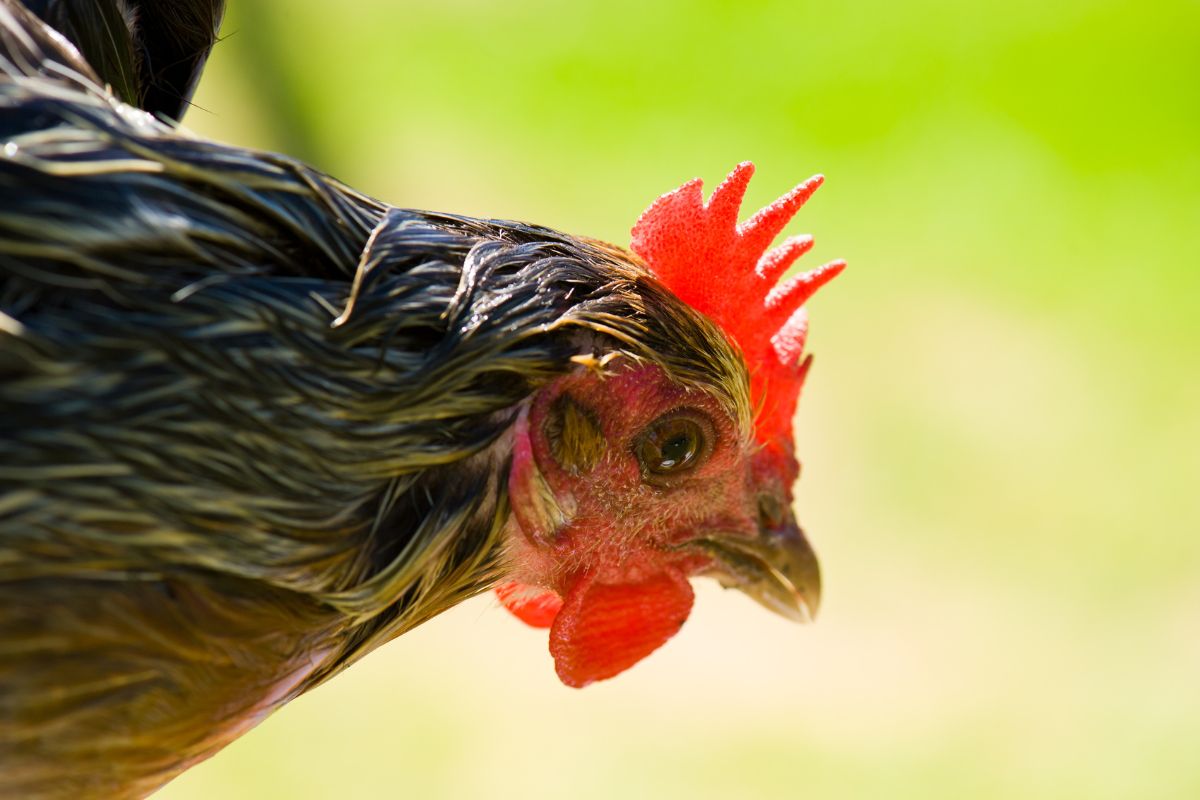
Chickens do have wattles, yes. Both hens (females) and roosters (males) have wattles. They will vary in size depending on the breed, but all chickens have them as they serve some important purposes as I’ll explain.
Jump to:
What Do Wattles Look Like?
To make sure we’re on the same page and talking about the same thing, a wattle is the two red fleshy things, dangling from the bottom of a chicken’s head. (see the header photo)
Basically, wattles are hanging from either side of what we would call their chin area. Although, chickens - and all birds for that matter - do not have chins.
But that’s a topic for another post!
The size, shape, color, and overall look of a chicken’s wattle vary from absurdly large to almost non-existent depending on the breed.
On some breeds - Polish and Silkies come to mind - sometimes you can hardly see their wattles and would be forgiven for thinking they do not have any.
In the case of Silkies, their wattles are often hidden under their fuzzy feathers. Because it’s usually black too, it doesn’t stand out like a bright red wattle.
You can hardly see a wattle on most Polish chickens too because their wattles are very small, and they’re often completely hidden by their beards.
On the other side of the wattle spectrum, you have chickens like White Leghorns, and Rhode Island Reds. These breeds have pretty impressive looking, large, dangly, bright red, wattles.
Why Do Chickens Have Wattles?

Wattles aren’t purely decorative, they provide some vital functions for chickens. Most importantly wattles function as:
A General Indication of Health
Off-color or damaged wattles are often one of the first signs that a chicken has some kind of health issue.
There may be something directly affecting the wattle, like frostbite or a pecking injury. Or, it can indicate that there is an underlying health issue.
Healthy chickens have bright red wattles and combs. If you’ve noticed any of your hens have pale, flopped over, or disfigured wattles, you should seek the advice of an avian vet.
Temperature Regulation
One of the key functions of wattles is to help chickens regulate their body temperature. Chickens aren’t able to sweat and need some other ways to regulate their temperature.
It may not seem like it would make a big difference, but there is blood flowing through their wattles. Then enables the blood to be air-cooled as it circulates back into their bodies.
Related - Can chickens sweat?
Attracting Mates
As is often the case in the animal kingdom, there are features on both hens and roosters that make them more attractive to the opposite sex.
It’s generally believed that wattles and combs play a big part in how attractive roosters find hens, and vice versa. This being; the larger the wattles on a rooster, the more attractive they are to the hens in the flock.
What Age Do Chickens Get Wattles?

This is a question that a lot of owners ask as they’re watching their chicks grow up in front of them.
Not least because when chickens start to develop combs and wattles you start to get a good idea of whether or not your chicks are males or females. Roosters almost always develop wattles sooner, they’ll be bigger, and usually redder.
The problem is, it’s very breed-specific. Some breeds will start to develop wattles at just a few weeks old. While other breeds will not develop wattles for several months.
The best I can suggest is that you research your specific breed. It’s often a good idea to speak with a hatchery, in particular, the hatchery where you bought your hatching eggs or chicks from.
Why Do Chickens Have Combs?
We’re talking about wattles, but it’s hard to talk about wattles without mentioning those large, red things that are on the top of a chicken’s head.
These are called combs. They also come in all sorts of shapes and sizes and play a very similar role as wattles.
In fact, if you look at a chicken’s entire head, there is almost a helmet-like shape of that red fleshy substance that comprises a comb, wattle, and the area between the two.
Combs are typically larger and are even more effective when it comes to helping a chicken release some heat. Likewise, for roosters, an even larger and more impressive comb makes them more attractive to mates.
In Summary
Hopefully, there is nothing you no longer do not know about those dangly red things hanging from a chicken face known as their wattles.
As explained, wattles are not there just for decoration. They play an important role in the health and wellbeing of your chickens, keep an eye out for healthy wattles!
The same applies to combs. Combs are one of the most identifiable and unique features for most hens and are just as interesting.





